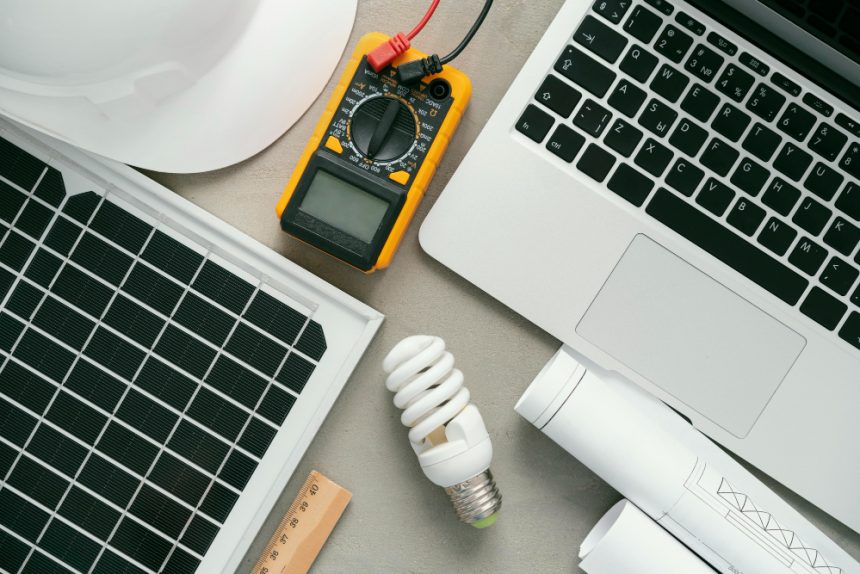Energy efficiency has become a defining challenge of the 21st century. As billions of gadgets—from watches and phones to home appliances and industrial sensors—demand continuous connectivity, the global appetite for energy grows exponentially. Yet, the story of technological progress is not merely one of expanding capabilities; it is also a story of learning to do more with less. Over the past decade, engineering innovation, artificial intelligence (AI), and miniaturization have converged to create a paradigm shift in how devices consume, manage, and conserve power.
At the heart of this transformation is semiconductor evolution. Engineers have pushed the boundaries of transistor density and performance-per-watt through new materials such as gallium nitride (GaN) and silicon carbide (SiC), which outperform traditional silicon in power conversion efficiency and thermal stability. Advanced semiconductor processes—measured now in nanometers—translate directly to lower leakage currents, reduced voltage requirements, and greater performance under lower wattage conditions. These gains are not just academic; they underpin visible improvements in battery life, device responsiveness, and environmental sustainability.
Modern gadgets also rely on increasingly intelligent power management systems. Smart power chips integrate multiple voltage regulators and intelligent controllers that adapt dynamically to real-time usage patterns. For instance, a smartphone’s processor no longer runs at full throttle by default; instead, it predicts workload demands using embedded machine learning models that determine when to boost performance and when to idle efficiently. The same principle applies to wearables, drones, and even laptops—each device is gaining the ability to autonomously fine-tune its power consumption.
Artificial intelligence has become a crucial ally in this new energy-conscious world. Machine learning algorithms analyze how users interact with their devices, when they charge, what applications they use most, and even environmental factors such as ambient light or motion. This allows devices to anticipate needs rather than react to them. AI-driven energy management turns every millisecond and every byte of data into an opportunity to conserve power without compromising capability.
Miniaturization adds another dimension to this evolution. Smaller chips not only reduce size but also minimize resistive losses, improve thermal dispersion, and allow for more complex power management circuitry within constrained spaces. This has allowed engineers to integrate multiple subsystems—wireless communications, sensory data processing, and even edge computing—into single efficient chips. As a result, the modern gadget ecosystem is becoming both more powerful and more energy-aware, evolving into an intelligent network of devices that manage electricity like a resource, not a commodity.
Consumer impact is immediate and measurable. Devices last longer between charges, energy bills drop as appliances operate more intelligently, and the ecological footprint of electronics manufacturing begins to shrink. For manufacturers, these innovations open avenues to differentiation through sustainability, giving them a competitive edge in a marketplace increasingly driven by environmental consciousness. The foundation being laid today will lead to a future where every watt used is recorded, analyzed, and optimized—an era of adaptive energy consumption built on the pillars of smart engineering, AI, and data-driven design.
The next stage of energy efficiency is not just about extending battery life—it’s about creating intelligent ecosystems where devices make autonomous power decisions. This emerging field of context-aware efficiency will transform how electronics interact with both their users and their surroundings.
Imagine your smartwatch communicating with your smartphone and smart home hub to coordinate energy use based on your location and schedule. As you leave home, lights and appliances reduce their power draw automatically. Your devices are not simply programmed but learning—adapting to behavioral patterns through AI-driven predictive models. This level of coordination depends on breakthroughs in edge computing and low-power neural processing units capable of running algorithms locally, thereby reducing the energy costs of cloud-based computation.
Energy harvesting technologies represent another frontier. Future gadgets may recharge themselves partially through ambient sources such as light, motion, heat, or radio frequency energy. Tiny antennas and nanostructured materials embedded in surfaces could capture wasted environmental energy and feed it back into storage cells, reducing dependence on traditional charging methods. This concept is already being tested in low-power IoT sensors used in remote areas where battery replacement is impractical.
Moreover, advances in quantum-level transistors and molecular electronics promise unprecedented energy control. Quantum tunneling transistors, which operate with near-zero leakage currents, could cut energy losses by magnitudes while maintaining ultra-high processing speeds. Coupled with neuromorphic architectures—processors designed to mimic the brain’s synaptic efficiency—these innovations move the industry toward adaptive computation, where energy allocation is dynamically proportioned to cognitive demand.
Material science is also playing a major role. Two-dimensional materials like graphene and transition metal dichalcogenides are being used to design components that are not only thinner but also more electrically efficient and flexible. These materials may redefine the limits of performance for flexible displays, wearable electronics, and implantable medical devices—all functioning at power levels unimaginable a decade ago.
On a larger scale, connectivity among devices is becoming a critical factor in efficiency. The rise of smart grids and energy-aware IoT networks allows devices to anticipate power availability. For instance, when renewable sources like solar or wind energy produce an abundance of electricity, devices can perform energy-intensive tasks. Conversely, during grid stress, they defer operations automatically. This level of coordination blurs the line between personal electronics and a planet-wide energy ecosystem.
What once seemed futuristic—the notion of self-optimizing, communicative gadgets—is now within reach. Research labs and global tech firms are investing heavily in developing standardized communication protocols that enable energy-conscious coordination across brands and product categories. The convergence of AI, advanced semiconductors, and real-time analytics is setting the stage for a world where energy consumption is not just efficient but orchestrated.
The implications are broad and profound. Reduced power waste means lower environmental impact, but also extends beyond ecology into convenience, cost reduction, and reliability. Devices that think about when and how to consume power will require fewer manual adjustments, be less prone to wear from overuse, and offer consistent performance over longer lifespans. The cumulative effect of millions of self-managing gadgets could alter global energy consumption patterns, making sustainability a natural outcome of intelligent design rather than a forced constraint.
In essence, the future of energy efficiency is intelligent, interconnected, and self-regulating. Through micro-level innovation in materials and chip design, and macro-level coordination via AI and data-driven communication, the world is moving toward a sustainable digital ecosystem. It’s a shift from passive electronics to active participants in energy conservation—where every charge, every signal, and every algorithm works toward the collective goal of doing more with less. This vision, once theoretical, is steadily becoming the blueprint for the next era of technological progress and environmental responsibility.






